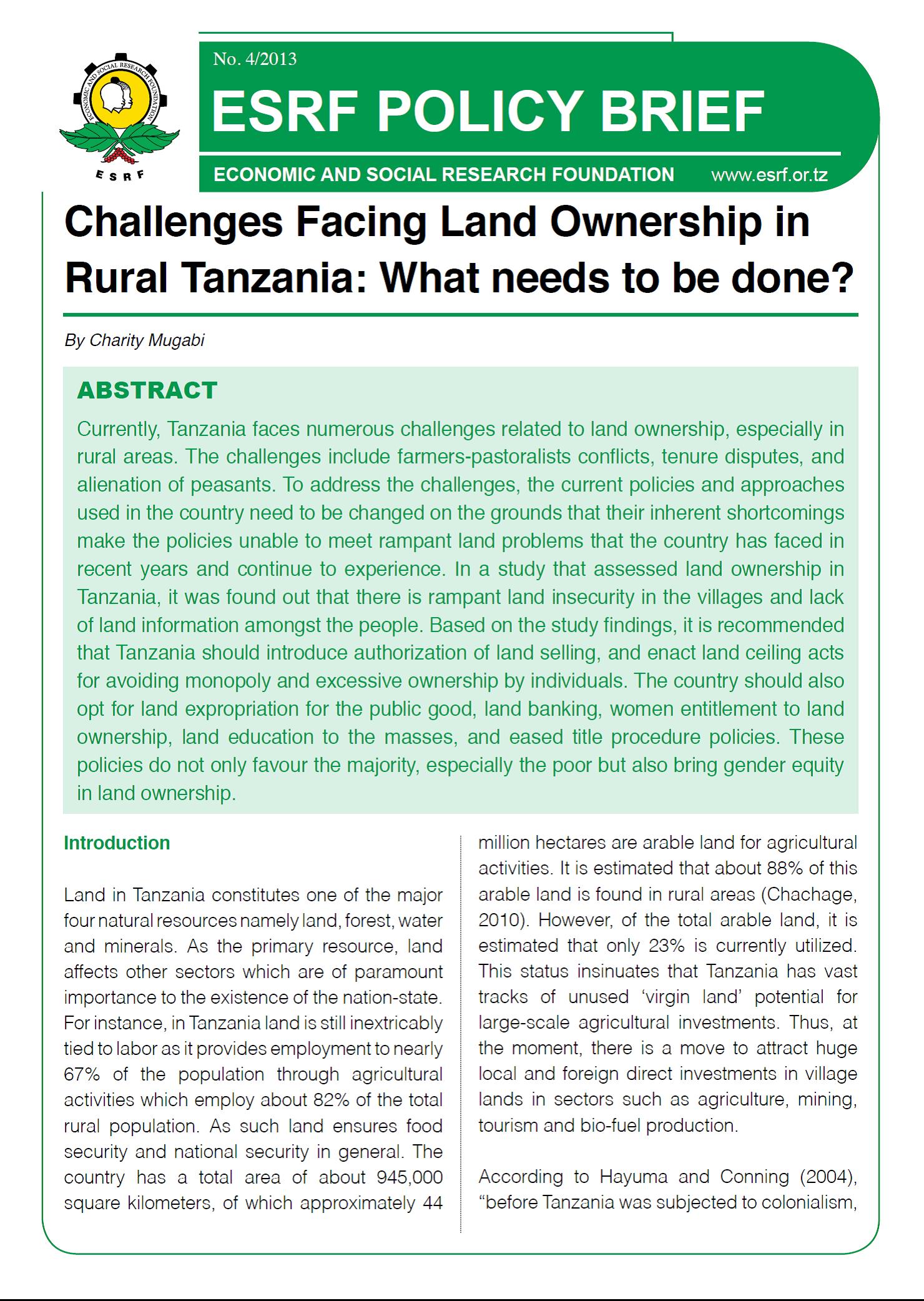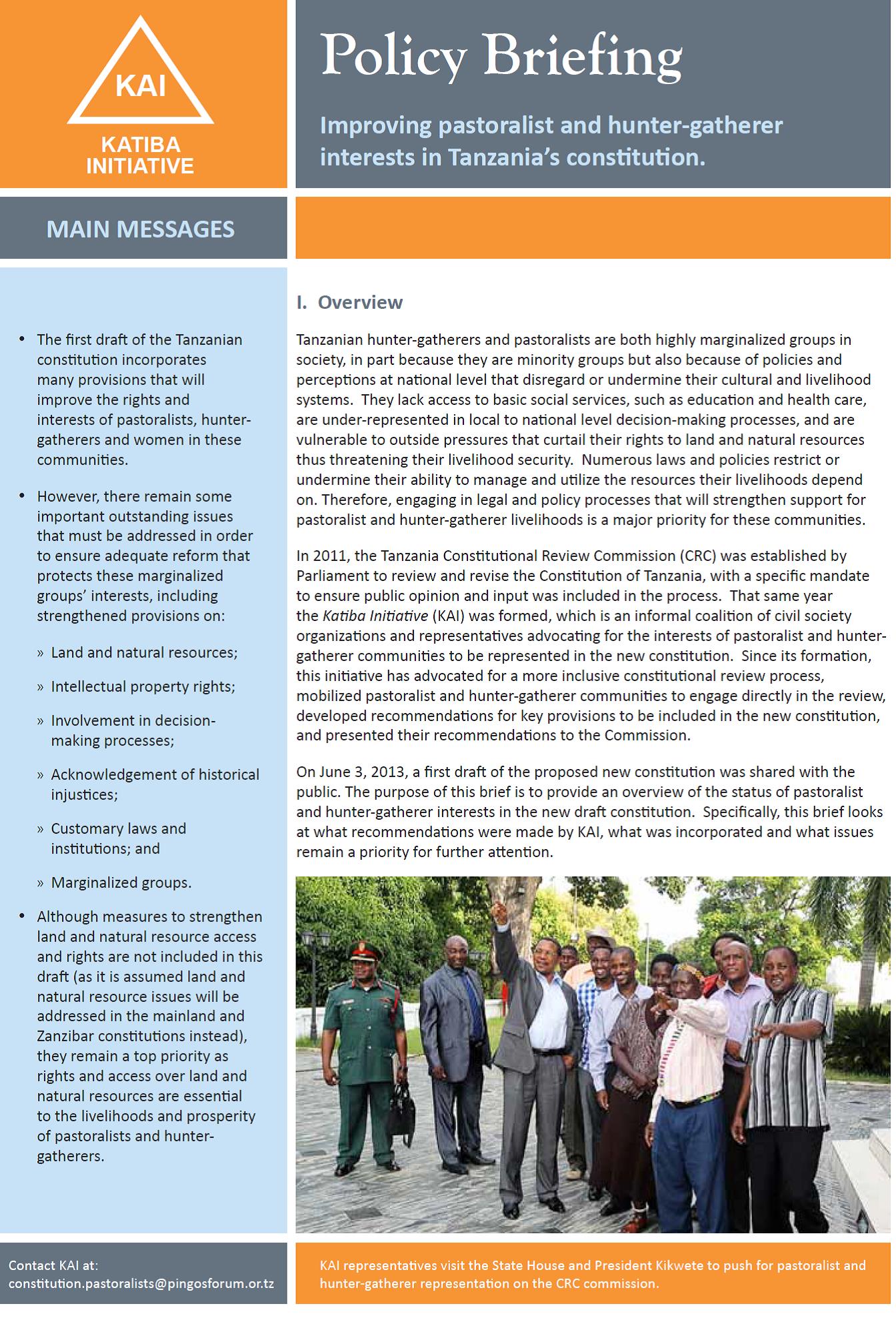The APRM and land reforms in Africa : enhancing good governance in land management : final draft paper
The African Peer Review Mechanism (APRM) is a mutually agreed instrument established in 2003 by the African Union in the framework of the implementation of the New Partnership for Africa’s Development (NEPAD). The objective of the APRM is to foster the adoption of policies, standards and practices that lead to political stability, high economic growth, sustainable development and accelerated regional and continental integration.
Land reform
This chapter uses both classic and contemporary literature to trace how land policies, and particularly land reform, have gained, lost, and regained prominence in development strategies and debates since the Second World War. It introduces contemporary issues and debates on gender and generational issues in land policy and land grabbing involving sometimes spectacularly large corporate land deals, and concluding with reflections on new ideas of food and land sovereignty that drive today’s agrarian movements.
Securing Africa’s land for shared prosperity: A program to scale up reforms and investments
Few development challenges in Africa are as pressing and controversial as land ownership and its persistent gap between rich and poor communities. With a profound demographic shift in Africa from rural areas to the cities where half of all Africans will live by 2050, these gaps will become steadily more pronounced as governments and communities rise to the challenge of growing enough aff ordable nutritious food for all families to thrive on the continent. In some countries in the region, these gaps—allied as they are with high
Policies on Managing Risk in Agricultural Markets
Over the past dozen years, policymakers
have largely abandoned long-standing popular approaches for
addressing risk in agriculture without fully resolving the
question of how best to manage the negative consequences of
volatile agricultural markets. The article reviews the
transition from past policies and describes current
approaches that distinguish between the trade-related fiscal
consequences of commodity market volatility and the
How Research Can Assist Policy : The Case of Economic Reforms in Uganda
Research has had a powerful impact on
policy in Uganda, affecting the climate of opinion,
improving the quality of the policy debate, and helping
focus public policy and intervention on poverty reduction.
Uganda s successful use of knowledge and research to help
set public policy priorities demonstrates that even a poor
post conflict country can, in a relatively short period of
time, create an effective information base and feedback
Global land governance: From territory to flow?
This article reviews recent research on contemporary transformations of global land governance. It shows how changes in global governance have facilitated and responded to radical revalorizations of land, together driving the intensified competition and struggles over land observed in many other contributions to this special issue. The rules in place to govern land use are shifting from ‘territorial’ toward ‘flow-centered’ arrangements, the latter referring to governance that targets particular flows of resources or goods, such as certification of agricultural or wood products.
Agricultural policy reform and food security in China
In 1978, the rural reform began in China, and since then farmers, including the poor ones, have benefited from a steady growth in income and gradually strengthened food security. This article explains how China achieved food security in the past three decades, how the reform process has affected poverty reduction and what aims are established to deal with extreme poverty and child malnutrition for the period of 2011–2020.
Challenges Facing Land Ownership in Rural Tanzania: What needs to be done?
Currently, Tanzania faces numerous challenges related to land ownership, especially in rural areas. The challenges include farmers-pastoralists conflicts, tenure disputes, and alienation of peasants. To address the challenges, the current policies and approaches used in the country need to be changed on the grounds that their inherent shortcomings make the policies unable to meet rampant land problems that the country has faced in recent years and continue to experience.
Improving pastoralist and hunter-gatherer interests in Tanzania’s constitution
The first draft of the Tanzanian constitution incorporates many provisions that will improve the rights and interests of pastoralists, huntergatherers and women in these communities.
However, there remain some important outstanding issues that must be addressed in order to ensure adequate reform that protects these marginalized groups’ interests
Community development and land acquisition plan for Ebenhaeser and Papendorp (CDLAP)
The key focus of this document is the settlement of the Ebenhaeser restitution claim in the Western Cape. This is guided by the Settlement Framework Agreement which was signed by the Community, the then Department of Land Affairs and the Commission on the Restitution of Land Rights in March 2005.
The CDLAP has three main components:
Expansion of rubber (Hevea brasiliensis) in Mainland Southeast Asia: what are the prospects for smallholders?
The rubber tree is native to the humid tropics and has traditionally been cropped in the equatorial zone between 108Nand 108S; in mainland Southeast Asia this includes portions of southern Thailand, southeastern Vietnam, and southern Myanmar. In the early 1950s, the Chinese government began to invest in growing rubber in environments perceived to be ecologically marginal and eventually established state rubber plantations in areas that lie as far north as 228 north latitude.









